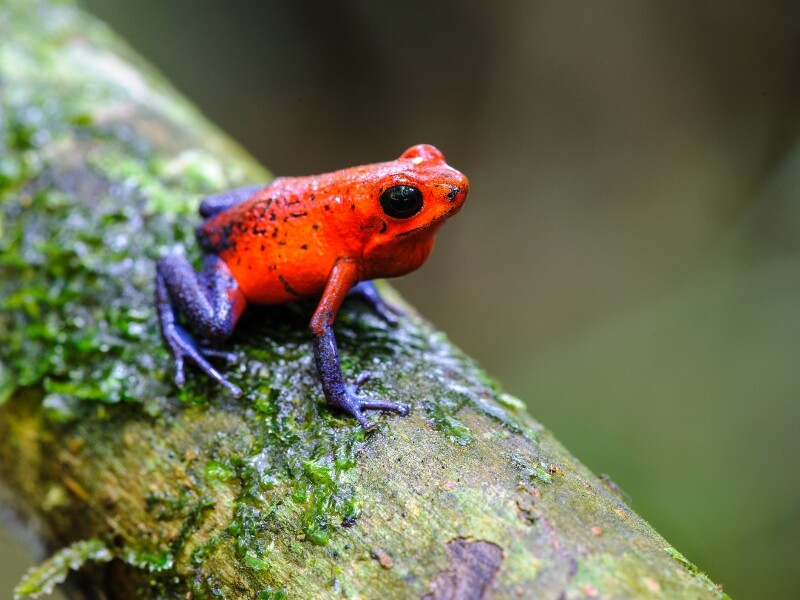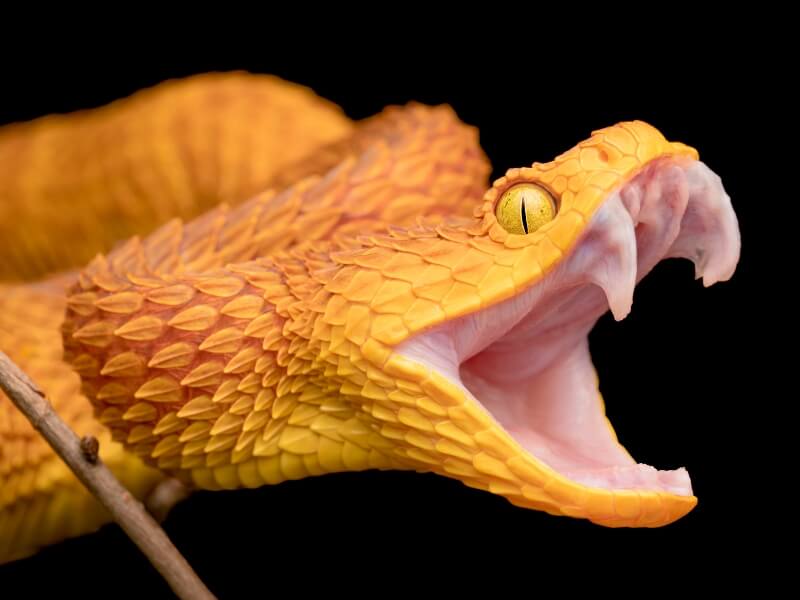The animal kingdom has a wide range of color combinations, many of which look totally random at first glance. Why is that frog orange? Why does that snake have such a distinct color pattern on its scales? An animal’s eye-catching colors typically serve one of two purposes — to attract a mate or to warn other animals of their toxicity.
If you see a brightly colored critter in the wild, your best bet is to stay away. Here’s how you can use colors to determine the toxicity of different wildlife species.
The Science of Aposematism
The scientific term for animals who use colors to demonstrate their toxicity is aposematism. Most aposematic animals are small and weak, which makes them vulnerable to numerous predators. These species gradually developed their unique color schemes through a particular evolutionary pathway with several transitional phases:
-
Phase One: The animal starts by concealing its bright coloration in body parts such as the limbs or underbelly. Increasing threats from predators trigger a behavioral change that causes the animal to display its bright colors more openly.
-
Phase Two: Next, the animal develops a chemical deterrent such as foul-tasting warts, a deadly poison or a venomous bite or sting.
-
Phase Three: As the chemical toxin becomes more potent throughout the generations, the animal develops even brighter colors all over its body.
Interestingly, the animal’s bold coloration often predates its toxicity. The transition from camouflage to bright shades was the first step in the evolution of these species, and they only became poisonous or venomous later on. This chain of events suggests that the most brightly colored animals also have the highest toxicity.
Colors You Need to Watch Out For

Aposematic animals can possess virtually any color on the visible light spectrum, but a handful of shades indicate toxicity the most often — red, yellow, black and white. These are the most common colors that animals develop as a warning to predators because they stick out like a sore thumb in almost any environment.
Red, yellow, black and white provide strong contrast with green and brown foliage, are easily visible in low lighting and act as a distance-dependent camouflage. Nearsighted predators have a hard time seeing these colors from a distance, but they’re impossible to miss in close proximity. These colors are also highly complementary and often appear on the same animal.
Many of the most well-known toxic species have these four colors in some capacity:
– Insects: black widow spider, fire ant, monarch butterfly, oriental wasp, cow killer, blister beetle
– Reptiles: black mamba, gila monster, Russel’s viper, pit viper, banded krait, eastern coral snake
– Amphibians: golden poison frog, poison dart frog, rough-skinned newt, red-spotted newt
– Birds: red warbler, regent whistler, hooded pitohui, spur-winged goose, European quail
– Mammals: skunk, vampire bat, short-tailed shrew
These animals might not look dangerous, but they have evolved to make the terrain their ally by exposing themselves at the most opportune times. They can hide in plain sight all day and demonstrate their coloring whenever they feel threatened. If you see an animal with distinct red, yellow, black or white patterns, you’d be wise to keep your distance.

Humans can also learn from other predators at the top of the food chain. When high-level predators such as wolves and bears encounter a potentially toxic animal, they don’t take any chances. They trust their instincts and experience rather than risking their lives for an easy meal. You should adopt the same mentality.
Other Ways to Determine Toxicity
Although color is usually the best way to determine toxicity in wildlife, it’s not always accurate. Some brightly colored species are harmless, such as the iguana or scarlet king snake. These species developed their unique color patterns simply to attract mates and don’t pose any threat to humans.
On the flip side, some of the most dangerous animals in the world are heavily camouflaged and almost impossible to see with the untrained eye. Most venomous snakes are brown or gray and completely blend into their environments. That’s why you should never wear open-toed shoes when exploring the wilderness.
Fortunately, there are other ways you can tell if an animal is poisonous or venomous. They will often demonstrate aggressive behavior to warn predators to stay away. A great example is the rattlesnake, which makes a distinct rattling noise with its tail and assumes an attacking position when threatened. It doesn’t want to bite you, but it’s always ready to strike.
Other distinct features such as the animals’ head or eye shape can give them away. Almost all venomous snakes have triangular head shapes while non-venomous snakes have round head shapes. Many poisonous frogs have warts on their skin in addition to their bright colors, which can help you set them apart from non-poisonous amphibians.
As a general rule, anything with stingers, quills and spikes is also toxic to humans in some capacity. Hornets, scorpions, porcupines, sting rays, jellyfish and many other species are armed with sharp weapons that can cause painful symptoms if they penetrate the skin.
Don’t Let the Pretty Colors Deceive You

Small brightly colored critters like the poison dart frog and eastern coral snake are some of the most beautiful animals in the world, but they’re also the most dangerous.
Don’t let the pretty colors deceive you. Those colors should tell you loud and clear to stay away — especially red, yellow, black and white. If you see these colors in the wild, walk in the opposite direction.
=====
Become a Survival Dispatch Insider …
We bring together survival enthusiasts and preppers to share skills and knowledge, so you can enhance your preparedness for emergencies and ensure the safety of you and your community.
The Results You’ll Get …
Our community, courses, and memberships are pretty special. We’re focused on the ways it will make a huge difference in your life.
Here are a few of the things you’ll be able to do as a member of Survival Dispatch Insider …
1) Improve your emergency preparedness by learning survival skills and strategies from experienced preppers.
2) Build lasting connections with like-minded individuals that share your passion for safety and readiness.
3) Access a wealth of knowledge and resources to assist in protecting you and your community during unexpected situations.
Click HERE to get started.
=====
